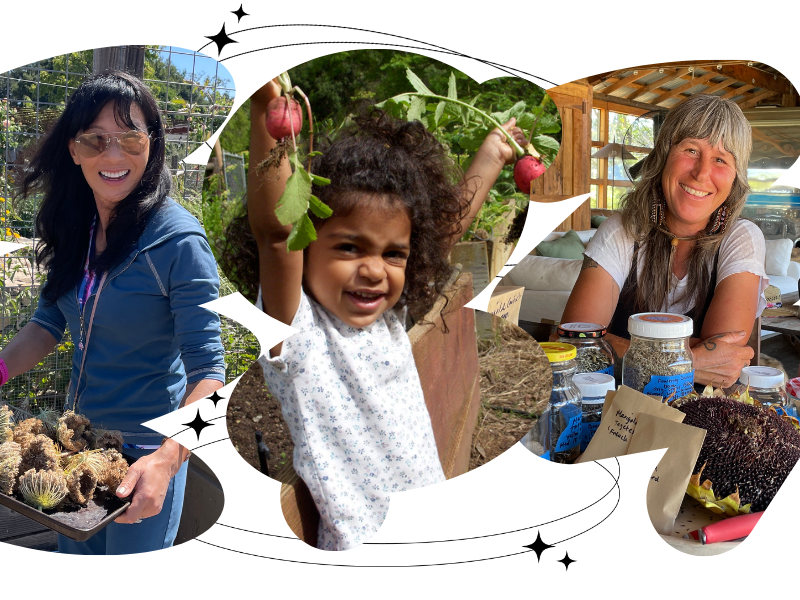Seeds to Sow in November
Temperatures are on the cool side now—a bit of rain here, pockets of sun there, and a cold snap in the air. But the long growing season in Zone 9b offers a lot for you to engage in if you still have the bug for gardening in fall and winter. With less direct inputs (water, amendments) into the garden, fewer insects to contend with, and extended growing times, cool season gardening doesn’t require close attention to produce great results. As a whole, the best way to set it and forget it over the cool months in our region is to plant seed garlic, wildflowers, and cover crop in the weeks between Halloween and Thanksgiving.
If you’re imagining a bright display of spring blooms, now is a great time to plant native wildflower seeds. Wildflowers benefit from cold stratification—meaning they need a period of time buried in cold soil during winter so they pop up easily as the soil warms through the wet season on into spring. Other flowers like hollyhock, nasturtium, Nigella, and sweet pea are all great to sow directly right now, too. Label where you plant these beauties and watch for surprises in spring.
You can get a variety of cool season veggies by planting seeds directly into soil like arugula, broccoli, chard, beets, lettuce, radish, and carrots are good choices. My favorite thing to plant now is garlic! Planting garlic in fall takes minimal effort and brings tasty rewards in summer. Fall is also the best time to prepare your soil for spring. By seeding cover crops, you improve the condition of your soil, which add nutrients like nitrogen and phosphorous and encourage the activity of microbes, earthworms and other soil-dwelling beneficial organisms to provide the best medium for new seeds and seedlings you’ll plant in the spring.
Here’s a list of the best seeds to plant in November in Napa County, plus a bonus video of my take on the fall season.
Flowers 💐🌸 🌼
bluebell, borage, calendula, cosmos, coneflower (Echinacea), hollyhock, lupine, marigold, morning glory, Mexican sunflower (Tithonia), nasturtium, Nigella, poppy, Scabiosa, sunflower, sweet pea, California native wildflowers
Vegetables 🥬🍅🥕
beet, bok choy, cabbage, carrot, chard, collard, fava, garlic, lettuce, kale, leek, mustard, radish, rutabaga, scallion, sorrel, shallot, spinach, turnip
Herbs 🌿🌱🪴
arugula, chive, cilantro, parsley, sage
Cover Crops 🌾🎋🌾
alfalfa, barley, buckwheat, clover, fava, flax, hard red wheat, Phacelia, red cowpea, vetch, winter oat, winter rye, yellow mustard
~~~
~~~









